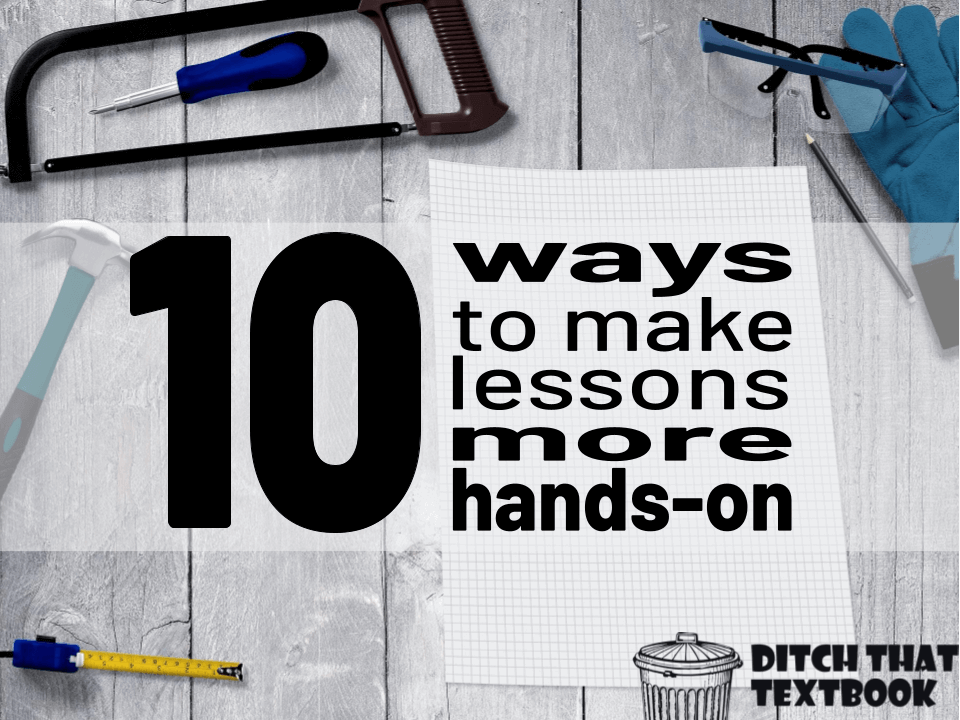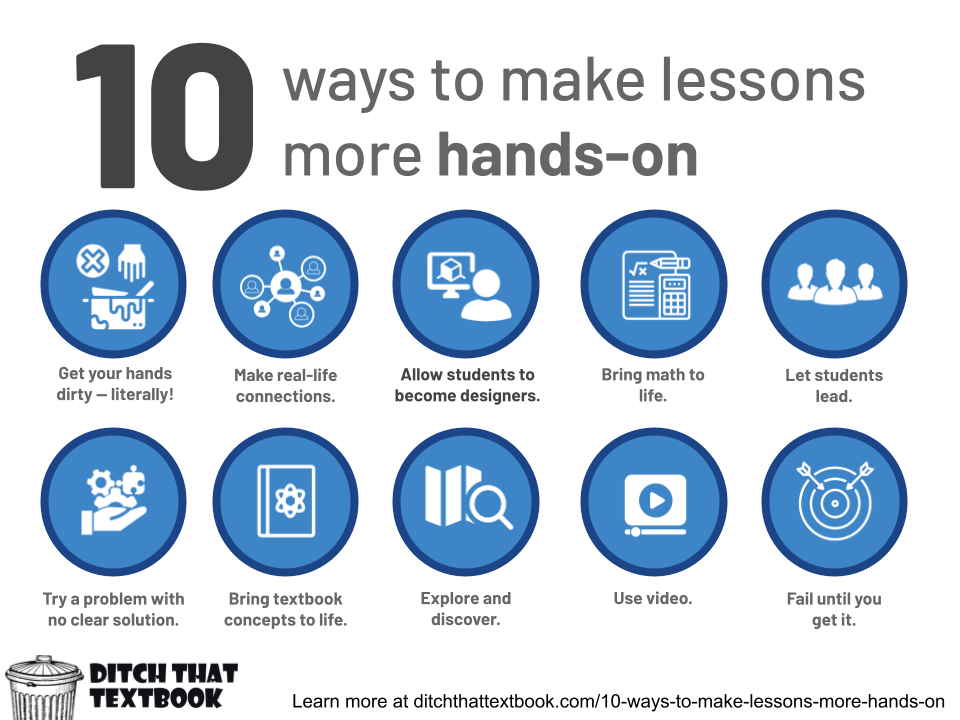
I’ve seen it in my own life. I bought an old zero-turn radius lawn mower and learned how to drive it on the fly. I’ve tinkered with broken items around the house until I fixed them.
I’ve seen it in the classroom. Students finally getting verb conjugation in Spanish after rearranging cards with word parts on them.
It’s true: hands-on learning works.
So many of us are tactile learners. We don’t want to be told how it’s done. We want to do it. It’s like that for adults and for kids.
But in so many classes, teachers feel that a lecture, a set of instructions or a thorough explanation is in order first. In many cases, that spoils the fun. It’s kind of like telling what’s going to happen in a movie and then watching it!
This was the topic of a recent #DitchBook Twitter chat (Thursdays, 30 minutes, 10 p.m. Eastern / 9 p.m. Central / 8 p.m. Mountain / 7 p.m. Pacific).
- D (Different)
- I (Innovative)
- T (Tech-laden)
- C (Creative)
- H (Hands-on)
It's time for H — hands-on. We asked participants to share a lesson that let students learn in a very hands-on way, and they didn’t disappoint!
Here are 10 hands-on ideas from the classroom and what we learned about hands-on learning from them:

1. Get your hands dirty — literally!

2. Make real-life connections.

The answer to “How will I use this in real life?” always makes content more relevant. I love Sheldon Soper's idea to have kids grocery shop with their parents because it helps kids and parents work together in learning in the context of something everyone does — grocery shopping!
More ideas:
- Mandi Tolen has her students create scaled objects from the classroom to explore scale factor. Check out this blog post to bring this lesson to your classroom.
3. Give students opportunities to become designers.

The maker movement and design thinking are hot topics in education right now. And for good reason! Designing, creating, changing, iterating, improving — they’re all good for the brain. Check out these ideas from Sarah Warren, Craig Klement and John Hartmann.
Also, visit this post — Design thinking: 10 key ideas for even more ideas.
4. Bring math to life.

Real-life math isn’t as clean and simple as worksheets often suggest it is. Data is messy and often doesn’t make sense. Bringing physics, geometry and other math concepts to life helps kids deal with that reality. See how in this watermelon catapult lesson shared by Craig Klement and this cupcake fractions lesson from James Varlack.
(See the final product of the watermelon catapult lesson here.)
5. Let students lead.

You really have to know your stuff to teach. (We know that as well as anyone as educators!) That goes for students, too. Adam’s Juarez shared a great example and uses the model where he “trains students to train classmates.”
Zac Eash breaks students up into groups to learn a game. The groups then observe each other playing the game and try to guess the rules.
6. Try a problem with no clear solution.

We don’t have to have all the answers as teachers. We don’t even have to know the answer to what we’re working on! Tisha Richmond shared a lesson that includes cooking without a recipe — a recipe for failure but certain learning.
Francois Provencher shared how in a University Applied Social Science class students were not given directions but had to come up with something then reflect on the group process.
7. Invent ways to bring textbook concepts to life.

New ideas make some sense in the book. Pretty flow charts can help. But when you see it in real life, it clicks.
Some ideas from the #Ditchbook community:
- Howard Kiyuna taught energy by building paper rockets and launched them with a steel bike pump.
- Karly Moura uses Scratch and Makey Makey to bring maps of the California regions to life.
- Cody McNeely takes a paper based activity from the textbook and turns it into a scavenger hunt.
- Cameron Ross' students use Micro:bit to create music.
8. Explore and discover.

Discovery is powerful. Students find things on their own and make sense of them. That’s what I love about the activity that Jill Weber shared — students start with a sandbox and end with new learning. (Jill has a great, very thorough blog post about it too.)
Howard Kiyuna shared how he set up a fish tank so that students could study the nitrogen cycle as they observed.
9. Use video.

It’s easier than ever to make video — and to make it compelling. Sounds like a great opportunity for hands-on learning.
Use the idea Megan Hacholski shared and create stop motion, or check out these blog posts about using video in the classroom:
10. Fail until you get it.

It’s OK to fail — even though our schools seem to be built around the idea that we should avoid it. We can help students to fail forward and learn when things don’t go as planned. The leaks in the lesson that Lanny Saretsky shared show that!
Want to bring failure to your class tomorrow? Have them build Rube Goldberg machines like Rayna Freedman suggests.
For notifications of new Ditch That Textbook content and helpful links:
Are you looking for quality, meaningful professional learning that both equips and inspires teachers?
Matt provides in-person and virtual keynotes, workshops and breakout sessions that equip, inspire and encourage teachers to create change in their classrooms. Teachers leave with loads of resources. They participate. They laugh. They see tech use and teaching in a new light. Click the link below to contact us and learn how you can bring Matt to your school or district!
Is Matt presenting near you soon? Check out his upcoming live events!



The “Tollbooth Game” was a favorite from when I was in school. Students ran a mock tollbooth with the rest of the class acting as the cars pulling through with tickets of varying amounts and various combinations of cash. Tollbooth operators had to process as many cars as possible (giving exact change, of course) within the allotted time period. Mr. Brennan turned our earnings and accuracy into a grade-wide competition.
The simulation reinforced the value of quick, accurate computational skills in an energetic and authentic way that hooked us all (not an easy feat with 12 & 13 year-olds)!
I taught an after-school science class at five different schools for grades 1-6, divided into 3 classes, 1-2, 3-4, & 5-6. I taught the same lesson to all the grades three times a day, five days a week. By the end of the week, I had taught the lesson 15 times. I made the lessons all hands on. The Ss loved it. I would have to say that the visual appeal was the key. The kids could see the science in action. You know that feeling when you teach a lesson and say to yourself what you will change the next time you teach it? Well, that was actually an hour later. The one thing I would change if I had to do it again would be to let the Ss pour over all the science books and pick the next lesson instead of me doing it. Then they could be the ones to give me the supply list. It honestly started to change my thinking as I studied the books, then applied the lesson, giving me a “can do” attitude towards any project.
I am the same way. I like having a written/video tutorial available and then I like to jump in and do it! That way, I can practice it and practice it. Case in point: During Grad School, the best classes were the ones where I actually had to DO what they were asking me about, not just write a paper on it EX: In Differentiation class, he had me write up lesson plans that included many elements of differentiation. However, in Tech Class, there was very little hands-on training and more writing about it than anything (not the prof’s fault though). We need to explain it (and provide written/visual instruction to our students, then let them go at it with gusto! This gets them excited about it while cementing knowledge on how to do it. Years later, when they actually may need the knowledge, it will come back to them.
I teach a welding class in a high school environment. We (students and I) have reversed engineered a grill/smoker of mine into a much larger size for sale. The math concepts involved created some confusion until they realized that the idea was to try, succeed or fail, and try again. We have settled on Plan B of the design, now working through mistakes in the assembly process. It has provided a multitude of lessons learned by my students, including what not to do again.